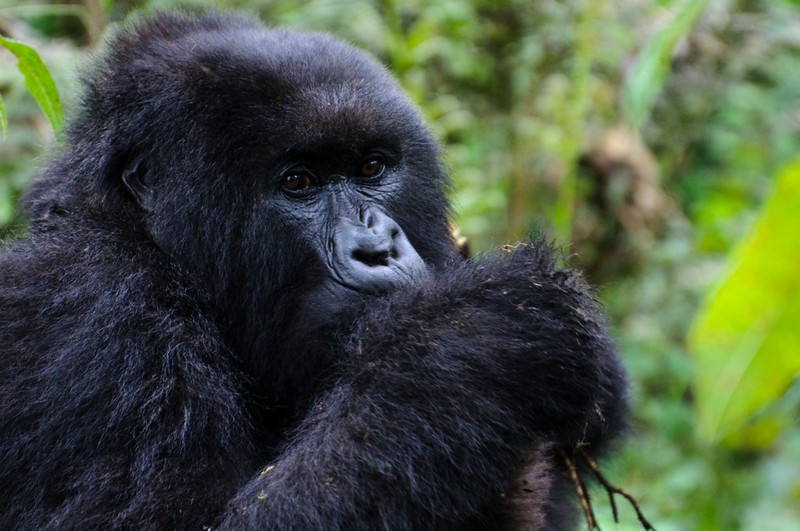Why are Mountain Gorillas Endangered
Why are Mountain Gorillas Endangered, Mountain gorillas are only located in three African nations: Rwanda, Uganda, and the Democratic Republic of Congo. Several African countries possess numerous attractions, however this nation is home to rare big apes that will enhance your safari experience in Africa. Mountain gorillas are highly endangered for various reasons; therefore, it is prudent to visit this country before they potentially face extinction, although this may not occur in the immediate future. Below are some reasons for the endangerment of mountain gorillas.
Why are Mountain Gorillas Endangered, there are two species of gorillas: the lowland gorillas inhabiting lowland woods and the mountain gorillas residing at elevations exceeding 10,000 feet on volcanic slopes.
Despite being formidable and sometimes regarded as fearsome creatures, gorillas are pleasant companions, exhibiting affection and tranquility. Humans and gorillas share several similarities; notably, gorillas exhibit playful behavior and possess an aesthetic appeal when observed in their natural setting.

Loss of habitat
The desire for commercial activities, including farming, mining, and agriculture, has resulted in the destruction of mountain gorilla habitats, as these gorillas rely on flora for sustenance and construct nests in trees for rest. The deforestation for economic purposes has deprived numerous gorillas of their habitats and sustenance.
Road clearance
The construction of roads in densely populated forests, resulting in deforestation, has endangered gorillas by facilitating poacher access to mountain gorillas, unlike in the past when poachers had to navigate through dense underbrush, which was arduous and laborious.
Illegal hunting
The need for game meat and increased revenue has prompted some villagers to shoot gorillas. Poaching poses a significant threat to non-habituated gorilla families that lack protection, while less than 20 percent of mountain gorillas are habituated, leaving 80 percent vulnerable to poachers.
Non-native animals kept as pets
Certain individuals catch gorillas and maintain them alive for the purpose of selling to overseas buyers interested in pet ownership. It is regrettable that many gorillas fall prey to traps intended for other species, resulting in severe injuries or, in some cases, death.
Disputes
The political condition of a nation can lead to the endangerment of gorillas. In nations such as Congo, persistent political conflicts sometimes result in the accidental killing of gorillas and the destruction of their habitats, leaving them without secure shelter.
Pathologies
Gorillas, akin to humans, are susceptible to illness epidemics, with the Ebola virus posing the most significant threat, having resulted in the deaths of numerous mountain gorillas; in 2003, one-third of the mountain gorilla population succumbed to the Ebola virus. Other diseases that plague mountain gorillas include intestinal parasites, hepatitis A, TB, and polio. Gorillas can contract certain diseases from humans; therefore, increased habitat loss leads to closer proximity to humans, resulting in a heightened risk of disease transmission.
Prior to the commendable efforts of the late American primatologist Dian Fossey, gorillas were facing extinction globally. We are grateful for her commendable efforts; otherwise, mountain gorillas would likely have been eradicated by now. The efforts of Dian Fossey and environmentalists have resulted in a rise in gorilla populations during the 1990s.
